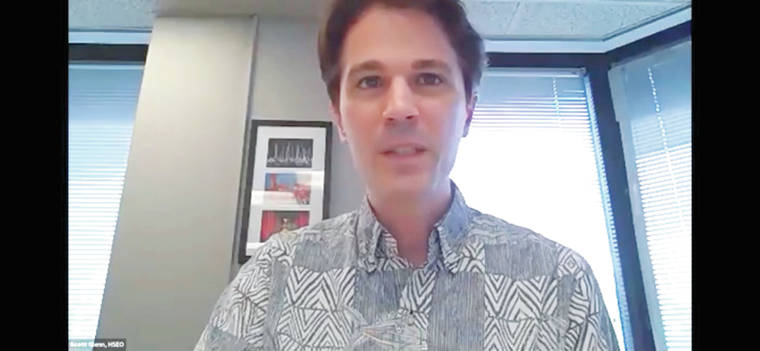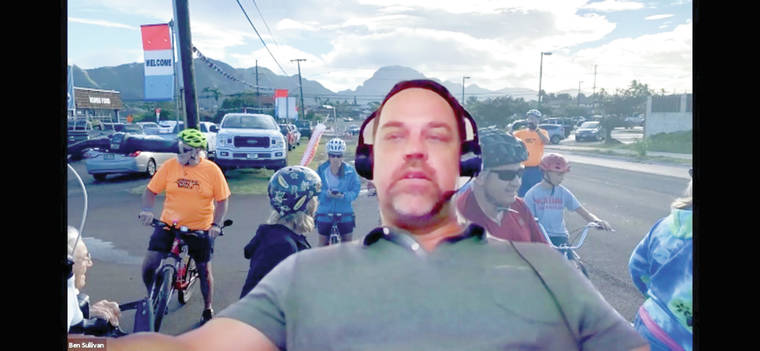LIHU‘E — County Energy and Sustainability Coordinator Ben Sullivan joined other field experts to discuss the role of renewable energy in Hawai‘i’s economic recovery plans in a recent online seminar hosted by the Chamber of Commerce Hawai‘i.
Statewide, the focus is to promote renewable energy as a way to support private-sector projects, to create new jobs and to diversify the economy.
From Kaua‘i, Sullivan brought participants up to speed on projects, but said the focus of the county is currently on immediate relief from pandemic-related stressors and looking for ways to rebuild the economy sustainability.
“Right now a lot of businesses and communities are in really difficult times, so as much as we are enthusiastic and excited about our progress in renewable energy, our main focus is really on the immediate needs of those folks,” said Sullivan.
He pointed out additional electric vehicle charging stations at various places around Kaua‘i, as well as the nearly-completed revamp of Rice Street through the federal TIGER (Transportation Investment Generating Economic Recovery) grant, a project that puts more of a focus on a walkable, bikable Lihu‘e, versus vehicle transportation.
He also said Kaua‘i Island Utility Cooperative is moving quickly toward a day when 80% of the island’s energy comes from renewable sources. KIUC has reached nearly 100% renewable-energy generation in a single day with a combination of solar and hydroelectric power.
State Sen. Glenn Wakai, chair of the Energy, Economic Development and Tourism Committee, said energy accounts for about 7% of GDP, or gross domestic product, in Hawai‘i, and said his goal is to increase that percentage.
“I challenged Scott Glenn and the (state) energy office with trying to push that 7% to 10% GDP,” said Wakai, explaining his plan to grow the renewable-energy sector in Hawai‘i relies on increasing capacity on the neighbor islands.
“Look at our neighbor islands as growth opportunities, because if energy is going to be super expensive on O‘ahu maybe we should take business to where it’s cheaper, on the neighbor islands,” said Wakai.
Glenn, the new chief energy officer of the Hawai‘i State Energy Office, said there are challenges with transitioning to a renewable-energy-based society.
“We are still based on fossil fuel. Right now the cost of our electricity across the islands and the cost of gasoline is subsidized by an island production of jet fuel,” said Glenn. “We need to advance our clean-energy goals faster if we can.”
The state has a three-part plan for building capacity in the renewable-energy sector, he said.
The first step is to focus on short-term job creation.
“What we can do in the next six months to get people back to work,” said Glenn, explaining the second step moves to a two-year timeline. “(Next is) workforce development, working with chamber, community colleges, working with the labor department and helping people get into clean energy and jobs.”
•••
Stephanie Shinno, features and community reporter, can be reached at 245-0424 or sshinno@thegardenisland.com.






